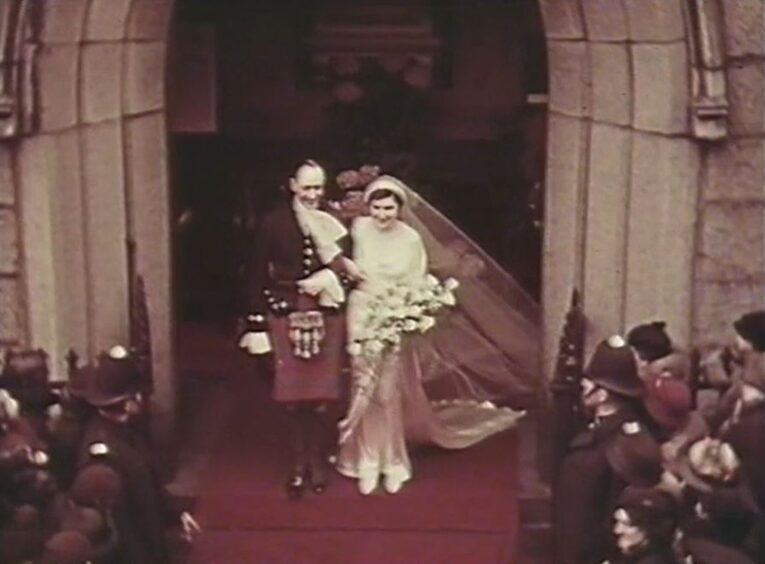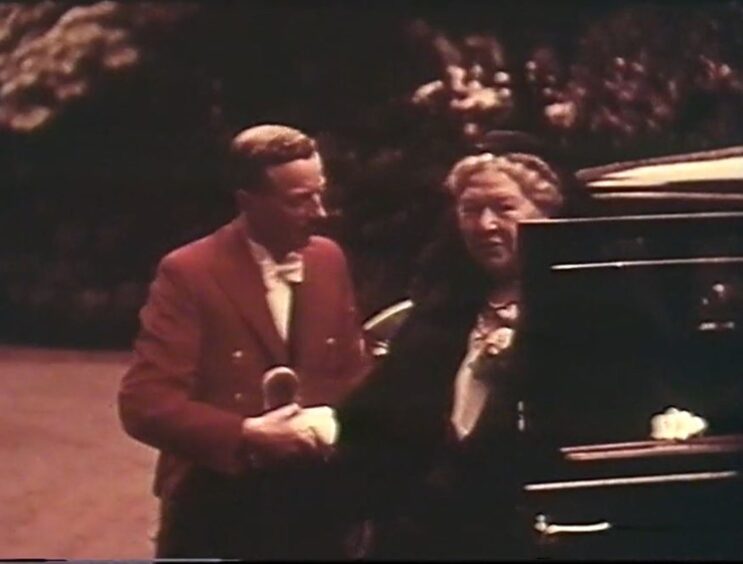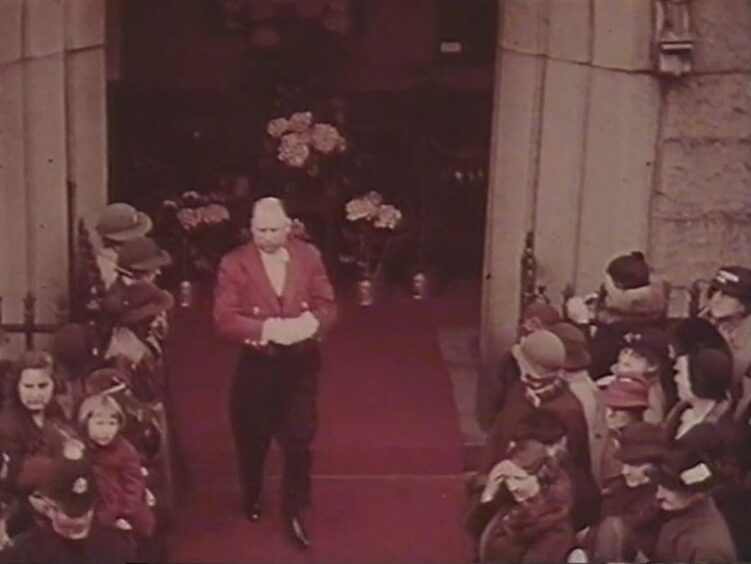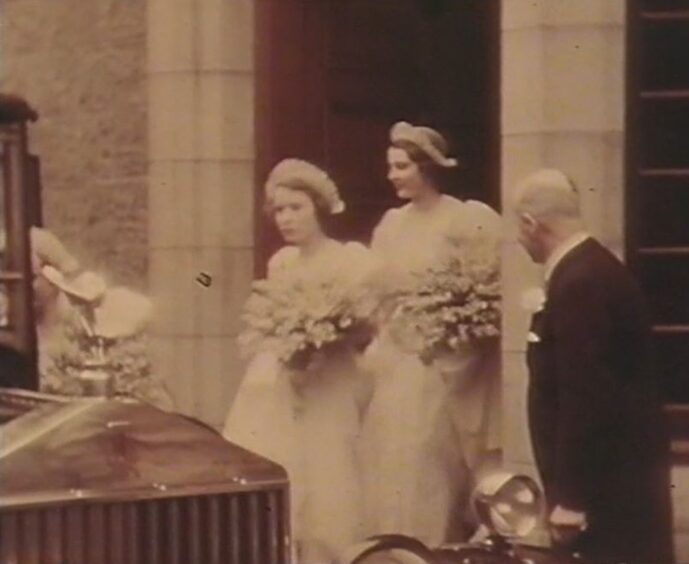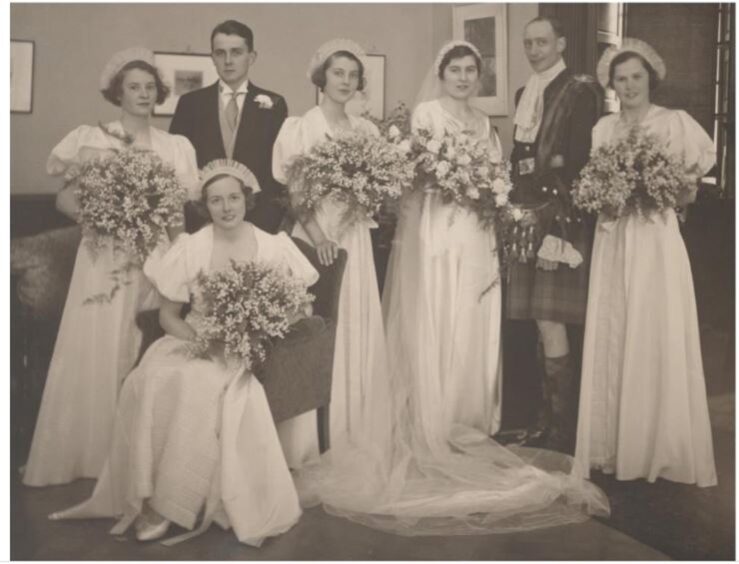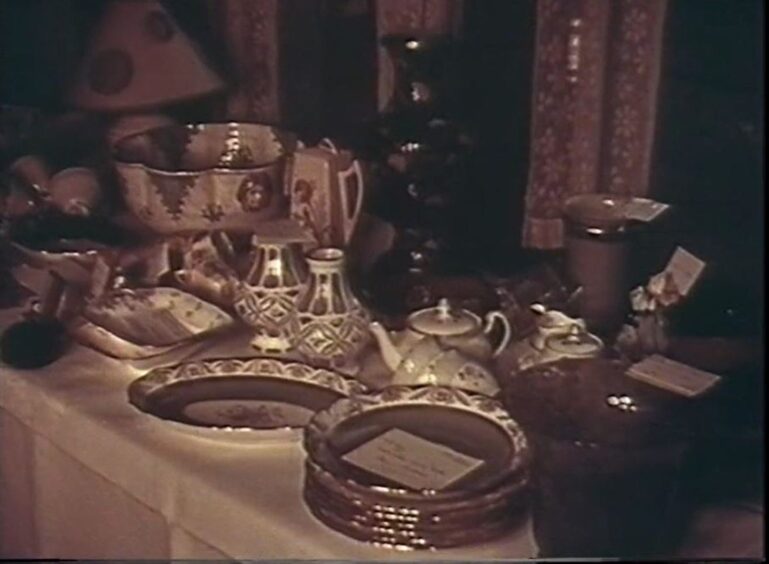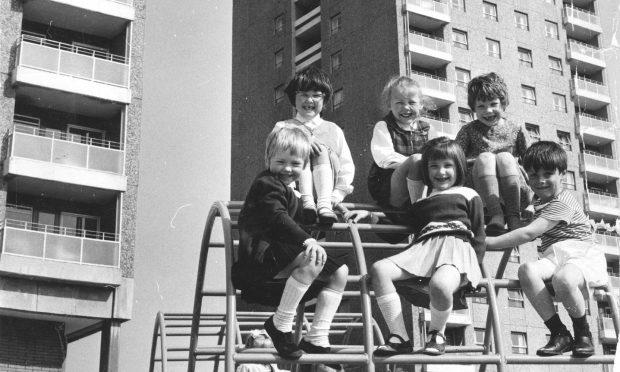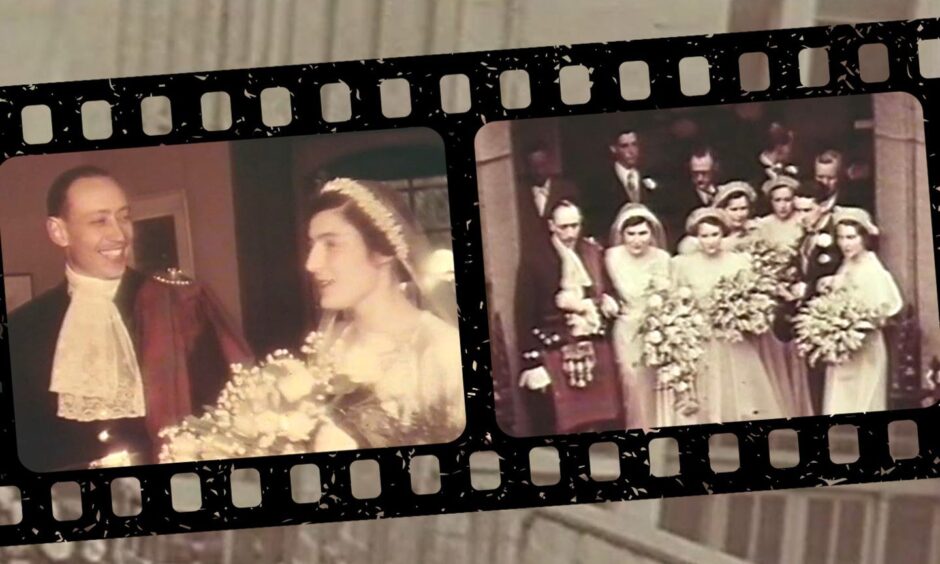
It was the wedding of year in Aberdeen in 1937.
The Lord Provost’s daughter was getting married at St Paul Street Congregational Church and everyone who was anyone in the city had an invite.
Those who didn’t thronged the entrance to the church to catch a glimpse of the goings-on, kept at bay by the Provost’s smartly dressed Master-at-Arms.
Two policemen were even required to hold back the crowds when the wedding party came out.
It was June 3, and pouring with rain, but no-one seemed to mind.
All smiles for the wedding of beautiful Marjorie Mary Watt, 22, a nurse at St Thomas’s Hospital, London and Hamish Gordon Grant Robertson, 32, a handsome doctor in Royal Army Medical Corps, Edinburgh Castle.
In fact the bride and groom were second cousins, having two great-grandparents in common.
They were Charles Robertson (1808-97) and Mary Laing (1801-61) who had 11 children between 1833 and 1853, all of whom survived childhood.
Hamish’s grandfather was John Grant Robertson, fifth child of Charles and Mary.
Marjorie’s grandmother was Charles and Mary’s tenth child, Marjory Mary Watson Robertson.
It had already been quite a year for the bride’s parents, Edward and Alice Watt, Lord and Lady Provost.
A few weeks earlier they had been in Westminster Abbey at the coronation of George VI on May 10, and four days later led the Coronation Ball at the Aberdeen’s Beach Ballroom.
Experience the day through rare film
We can now experience for ourselves some of the excitement of that day, through an eight minute piece of film which has somehow survived for more than 80 years in the Watt family archives.
The film, now digitised, has been accepted for posterity by the Scottish Moving Image Archive of the National Library of Scotland, based in Glasgow’s Kelvin Hall, and will go online at a future point.
Descendants of the Watt family have granted P&J readers the opportunity to view it here:
The best man was Dr George Theodore Robertson Watt, aged 24, while the bridesmaids were the bride’s sisters, Alice Crombie Watt , aged 16, and Elizabeth Margaret Robertson Watt, aged 14, her cousin Dorothy Mabel Robertson Watt, aged 21, and a friend Maysie Lumsden.
Family descendant Graham Watt, nephew of best man George, said: “It’s an early colour film using Kodak, although the colours have faded and only the Provost’s Master-at Arms stands out in his red waistcoat.
“The camera didn’t get inside the church but there are interesting pictures of the arrival of guests and the vehicles which transported them.”
Reception at Glenburnie Park
The reception took place at the bride’s home, Glenburnie Park, 13 Rubislaw Den North, Aberdeen.
A P&J reporter was there to give a highly detailed account of the proceedings.
There were nearly three hundred guests, ‘town, gown and county’.
Among the notables were Lady Aberdeen, who got a special cheer from the crowds as she emerged from her car being ‘known and loved by the people of the east end of the city’, according to the P&J report.
Future Nobel prize winner present
Another notable was Sir John Boyd Orr who was the director and powerhouse behind the founding of the Rowett Institute in 1922 and busy making his name as a world expert in nutrition.
He would go on to win the Nobel Peace Prize in 1949 “for his lifelong effort to conquer hunger and want, thereby helping to remove a major cause of military conflict and war.”
The guest list included a Marchioness, four knights, nine professors, three university principals, six colonels, an admiral and a bishop.
The crowds arrived early in the afternoon and waited outside for the duration of the service, undaunted by the lashing rain.
Others pressed to the windows of the tenement houses opposite the church and waved and cheered.
Pavements thronged
“The pavements on both sides of the street near the church were thronged with big crowds of spectators who eagerly watched the picturesque scene as the long procession of cars drove up with the guests. Many of those who attended are well known figures in the public life of the city, and as they stepped from their cars they were instantly recognised.”
The bridesmaids, ‘four charming figures in white’, also received a cheer from the crowds, but the greatest moment was when the bride herself arrived.
“She was the last to reach the church and her car drew up on the stroke of 2.30, the time fixed for the ceremony.
Crowds surged forward
“A town sergeant in his red coat, seated beside the chauffeur, gave an additional touch of colour to the scene.
“As the car stopped, the crowd in which the women predominated, surged across the street and completely surrounded it, and waved their good wishes to the bride as she stepped into the church, accompanied by her father.”
The reporter painted an elegant picture of the bride, who was wearing ‘a graceful gown’ out of ivory satin.
“The bodice of the gown was gathered in front from the waist to neck, and had a row of buttons down the back, and was adorned with a Luckenbooth pearl broach, an engagement token used in Scotland centuries ago.
“The sleeves of Magyar style buttoned at the wrist, and elegantly cut skirt swept into a long train. Over this flowed a net veil embroidered with silver and she carried a bouquet white roses and lilies of the valley.”
Bridesmaids wore pearl bracelets from groom
The gowns of the bridesmaids, Marjory’s two sisters Alice and Elizabeth, her cousin Dorothy and friend Marjorie Lumsden are also fulsomely described, including their lily-of-the-valley bouquets, quaintly pretty headdresses of ivory net with frilled brims, and each wearing a pearl initial bracelet given to the by the bridegroom.
The wedding ceremony was performed by the Rev A.W. Stevens and the Rev P.C. Millar.
The church was decorated for the occasion with masses of hydrangeas, in shades of blue, mauve, white and pink.
Presents included copious silverware
There’s no footage of the ceremony, but the film continues with the newly weds receiving guests at Glenburnie Park afterwards.
Graham said: “Apart from the wedding party, the bride’s father Edward Watt, her uncle Theodore Watt who acted as an usher, and the substantial presence of Lady Aberdeen, few of the wedding guests can be identified.”
The film also captures the bride and groom’s wedding gifts, an impressive array of all that was desirable and smart in the 1930s.
Graham observes: “The list of gifts is prodigious. As they started their married life, Hamish and Marjorie had over 50 new pieces of silverware, 32 cheques, 22 pieces of glassware, 11 vases, 8 travelling rugs, 7 sets of silver teaspoons, 5 travelling clocks, 5 sets of napkin rings, 5 luncheon sets, 3 leather writing cases, 2 Cona coffee machines and many other items, including golf clubs, an electric iron and a tea cloth.
“The most exotic present was a set of green silk lingerie from Miss Zina Moncrieff.”
What happened next?
Sadly the happy couple and many of their relatives were not destined to be long-lived, thanks in part to the arrival of World War Two just over two years later.
Hamish and Marjorie’s daughter Phoebe was born 11 months later on 4th May 1938.
Hamish spent much of World War Two as a Japanese prisoner after his capture in Hong Kong.
Deaths of Hamish and Marjorie
He died of bowel cancer in Hamburg in 1949, while a Lt Colonel in the British Army. He was 44.
Marjorie survived him by 23 years, until she died on 18th July 1973.
Marjorie’s mother Alice died in 1948.
Death of George
George Watt died in 1941, aged 28, in a German air raid on HMS Wryneck, during the evacuation of troops from Crete.
His father Theodore died in 1946.
Of the bridesmaids, Alice lived to be 74, Dorothy to 86, and Elizabeth (Betty) to 89.
Graham Watt reflected on the significance of the wedding to his family.
He said: “It could be said that the 1937 wedding was the pinnacle of the social progress of the Watt family in Aberdeen.
“It re-connected the Watt and Robertson families, restoring the Robertson surname, 60 years after Marjorie Robertson married William Watt in 1876, and until Hamish and Marjorie’s daughter Phoebe married Martin Christie in 1961.
“However, family circumstances were soon to change. Hamish and George died. Many of their generation left Aberdeen, initially as part of the war mobilisation but later to pursue careers and family lives in other parts of the UK and further afield.”
Colour footage had only recently become available
A spokeswoman for The National Library of Scotland Moving Image Archive is delighted to be able to preserve this footage as part of the National Collection.
She said: “Colour footage in 1937 had only been available for a couple of years and was very expensive.
“The crowds outside the church to wish the happy couple well are lovely to see and are common to the society weddings of that time.
“The first 16mm cine cameras were made available to the public in 1923 so the Watt Family were quick to adopt this new hobby and film their children going to school in 1928.”
More like this:
Aberdeen Grammar School ceremony marks 100 years of Lord Byron statue with special guests
